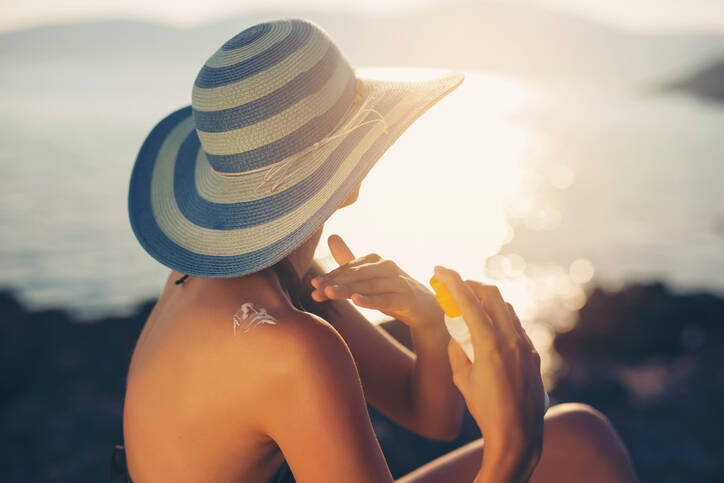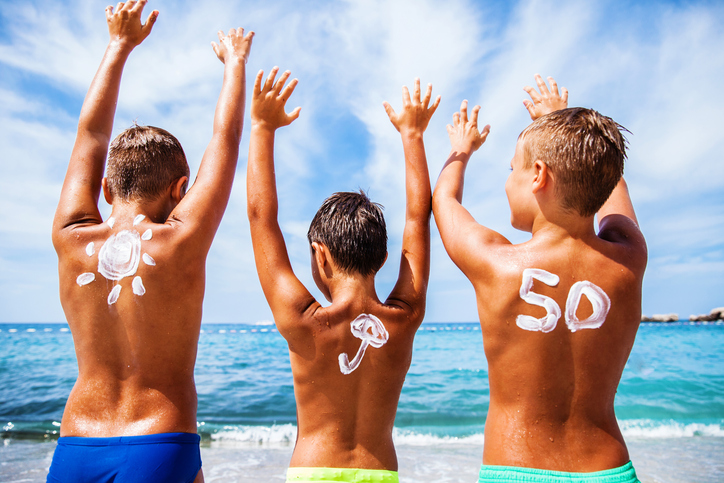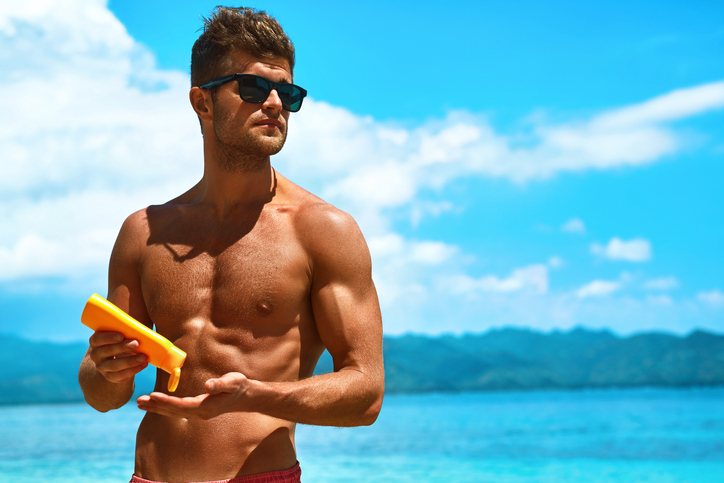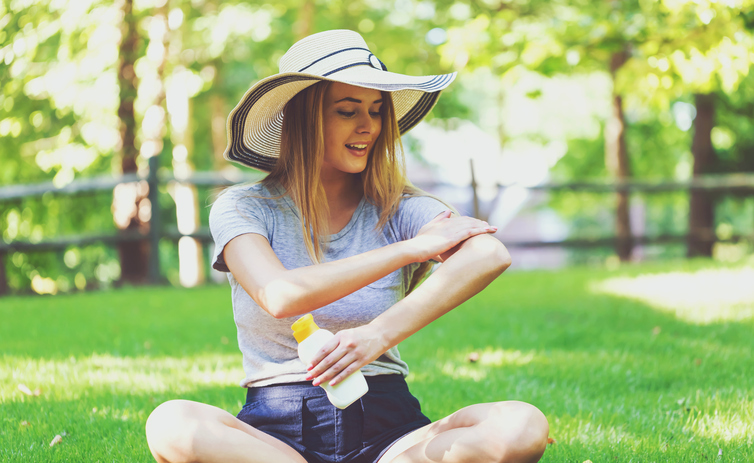- nhs.uk - Sunscreen and sun safety
- healthline.com - Every Sunscreen Question You Have, Answered
- who.int - Radiation: sun protection
How to choose a sunscreen? Why 50 in children and what is UV, SPF, phototype?

It's the season of summer, sun, water and holidays. It's difficult to navigate the multitude of sunscreens. Choosing the right sunscreen doesn't have to be as much of a hassle as it first seems. Think about the basics.
Article content
It is important to recognise the ability of a product to intercept harmful UV radiation. This radiation can be simply divided into UVA and UVB. Both are components of ultraviolet (sun) radiation. UVA penetrates deeper and causes permanent damage to the skin and UVB causes mainly superficial sunburn.
Protection against UVB radiation is shown under the term SPF (sun protection filter).
- SPF 6-10 = low protection
- SPF 15-25 = medium protection
- SPF 30-50 = high protection
- SPF 50+ = very high protection
The protection against UVA radiation is again indicated by the abbreviation PPD (persistent pigment darkening). However, the law does not require this information to be displayed, so you will often not find it on the packaging.
Classification of sunscreens by type of filter
Sunscreens protect us on the basis of the filter they contain. This can be physical or chemical. The ideal product should contain a combination of both filters.
Physical and chemical filter in the table
| Physical products | Chemical preparations |
| contain substances that reflect UV rays from the surface of the skin | contain ingredients that absorb UV rays and converts the UV rays into heat |
|
|
How to choose the right sunscreen
The right choice of sunscreen depends on several factors. We all want to get the best out of the sun's rays and achieve healthy, beautifully tanned skin. Read about how to get a nice tan in our article on healthy tanning.
Determine your skin phototype
How we can defend ourselves against the harmful rays has a lot to do with our skin phototype.
The table below shows the phototypes
| Phototype | Description |
| Phototype 1 |
|
| Phototype 2 |
|
| Phototype 3 |
|
| Phototype 4 |
|
We classify children's skin as phototype 1.
Therefore, we always choose SPF 50 or 50+ for children.

The location is also decisive...
Remember that in coastal areas or in the mountains, the intensity of the radiation is higher.
In simple terms:
The closer to the equator or higher up in the mountains (and therefore closer to the sun), the higher the SPF you need.
Activity and exercise
We sweat more during sporting activities. Therefore, the cream may not be as effective. Therefore, you need to reapply repeatedly so that the protective film on the body's skin is not broken due to sweating.
If you are planning to swim, prefer waterproof products. Also, we must reapply repeatedly.
In spring and early summer, it's always better to use a higher factor cream and start sunbathing gradually. Even more resistant and darker skin types are more prone to sunburn after a long winter.

What a good quality sunscreen should (not) contain
In addition to the basic information on the label, pay attention to the product's ingredients.
A good quality cream should contain ingredients that prevent skin irritation, itching and dryness, such as shea butter, vitamins, plant extracts and other nourishing and moisturising ingredients.
Undesirable ingredients include parabens, paraffin, oxybenzone, synthetic fragrances and similar irritating ingredients.
Let's take a look at all the summer problems together:
Our health in summer - sun, heat, injuries and illnesses
Using sunscreen
If you underestimate the correct application of a product, the protection factor can be reduced by up to two thirds. So it can easily happen that incorrect or insufficient application of a factor 50 cream will expose you to the sun as if it were a factor 20.
So precision is the key. Ideally, apply the product consistently, at least 20 minutes before sun exposure. Pay extra attention to more sensitive areas such as the nose, cheeks, lips, shoulders.
Here is a little guide to help you decide which UV factor to choose.
The time you plan to be in the sun divided by the time it takes your skin to defend itself = the factor needed
Example: 60 min : 10 min = SPF 6
Of course, this formula is only a guide. Always follow other recommendations and advice.
It is important to protect your head and neck. Prolonged exposure to direct sun can lead to sunburn (also incorrectly referred to as sunstroke).

Ako vybrať správny opaľovací krém
Interesting resources
Related










